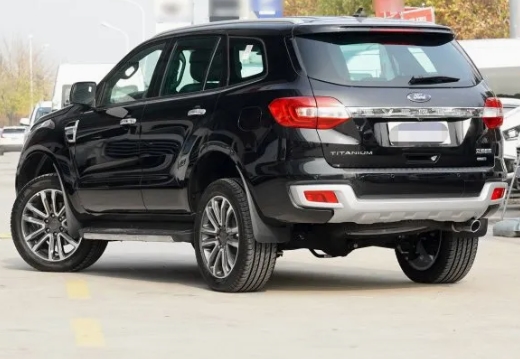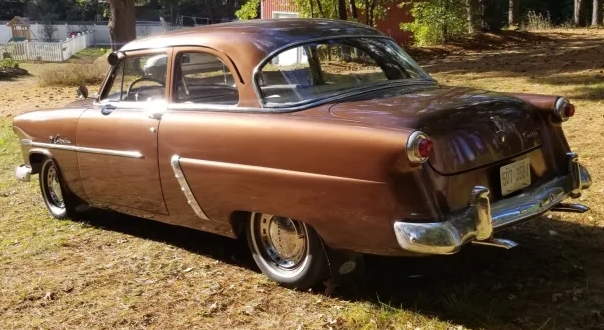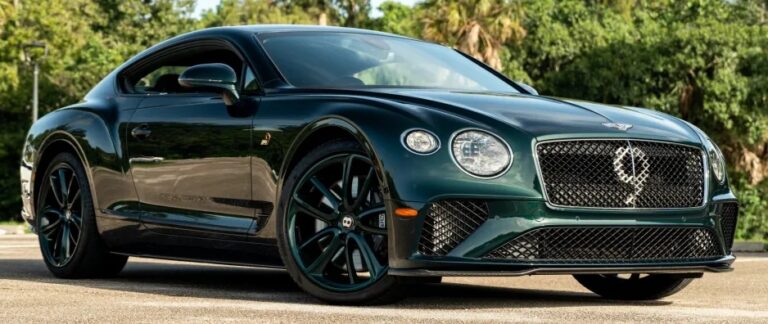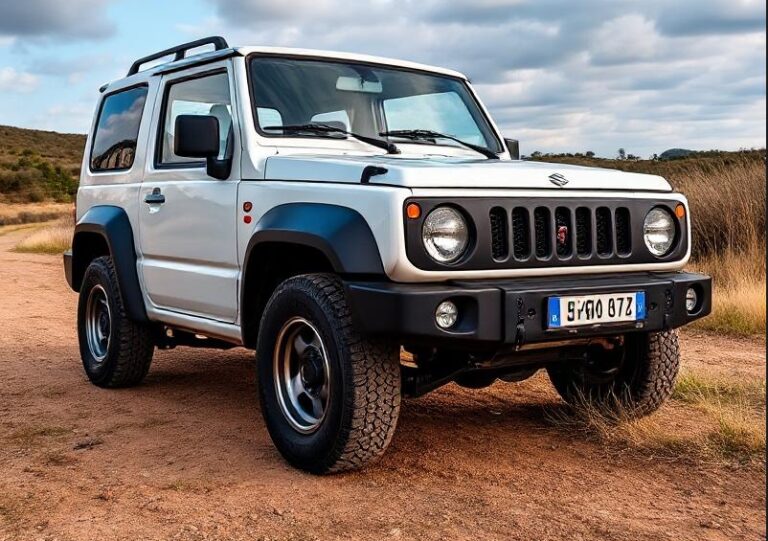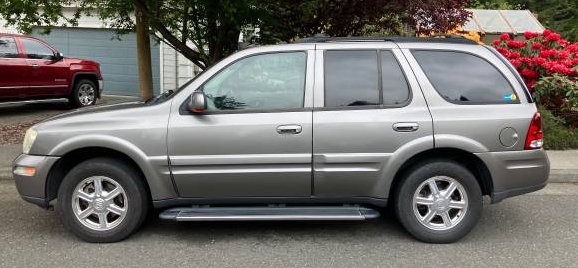The Global SUV Ascent: Charting the Evolution of The Ford Everest
In the vast and varied landscape of the global automotive market, some vehicles become icons in specific regions while remaining complete unknowns elsewhere. For North American buyers accustomed to the Explorer and Expedition, the Ford Everest is a name shrouded in mystery. Yet, for millions across the Asia-Pacific, Australia, Africa, and beyond, the Everest is not just a familiar nameplate; it is the definitive, rugged, family-hauling SUV. Born from the tough-as-nails DNA of the Ford Ranger pickup, the Everest has undergone a remarkable evolution, transforming from a utilitarian workhorse into a sophisticated, tech-laden vehicle that rivals the best in its class. This is the story of its ascent.
The Genesis: First Generation (U268, 2003-2015)
The story of the Ford Everest begins in the early 2000s, driven by a clear market demand in Southeast Asia. Competitors like the Toyota Fortuner (based on the Hilux) and the Mitsubishi Pajero Sport (based on the Triton/L200) were proving the immense potential of body-on-frame SUVs derived from popular pickup trucks. These vehicles offered the toughness and off-road capability of their ute brethren combined with the practicality of a three-row family wagon.
Ford’s answer, developed primarily by its truck operations in Thailand, was the vehicle codenamed U268. Launched in March 2003, it was christened the Ford Everest. In India, it was marketed as the Ford Endeavour, a name it would retain there for its entire lifespan.
Design and Engineering: The first-generation Everest was unabashedly a truck with a permanent canopy. Its design was a direct extension of the contemporary Ford Ranger, which itself was based on a Mazda B-Series platform. The front end, from the grille and headlights to the A-pillar, was virtually identical to the Ranger. The rear was a simple, boxy wagon design focused on maximizing interior volume and providing a third row of seats.
Underneath, the engineering was simple and robust. It featured a traditional ladder-frame chassis, an independent front suspension with torsion bars, and, crucially, a rugged solid rear axle with leaf springs. While this setup provided immense durability and load-carrying capacity, it resulted in a ride quality that was often described as jittery and agricultural, especially for rear passengers when unladen. Early models were predominantly offered in rear-wheel-drive (4×2) with a part-time four-wheel-drive (4×4) system available on higher-end models, complete with a low-range transfer case.
Powertrains and Trim Levels: The initial engine lineup was built for torque and reliability rather than outright performance:
2.5-litre SOHC Duratorq TDCi inline-four turbodiesel: The workhorse of the range, producing around 141 horsepower and 330 Nm of torque.
2.6-litre SOHC inline-four petrol: Offered in select markets, this Mazda-derived engine was less popular than its diesel counterpart.
These engines were paired with a 5-speed manual transmission or an optional 4-speed automatic.
Trim levels were straightforward and varied slightly by market, but generally followed a simple hierarchy:
XLT: The base or mid-spec model, offering standard features like air conditioning, power windows, and cloth seats. It was available in both 4×2 and 4×4 configurations.
Limited: The top-tier trim, adding cosmetic enhancements like chrome accents, alloy wheels, and often including leather upholstery and upgraded audio systems.
The 2006 Facelift: In 2006, the Everest received a significant facelift. The front end was completely redesigned with a bold, three-bar chrome grille and new rectangular headlights, bringing its look more in line with Ford’s global truck design language.
The interior also received updates with a revised dashboard and improved materials.
More importantly, the update introduced a new, more powerful engine option:
3.0-litre Duratorq TDCi inline-four turbodiesel: This engine delivered a healthier 154 horsepower and 380 Nm of torque, and was paired with a more responsive 5-speed automatic transmission.
This first generation, despite its unrefined ride, was a success. It established the Everest nameplate as a tough, dependable, and capable off-roader, setting the stage for a much more ambitious successor.
The Game Changer: Second Generation (U375, 2015-2022)
If the first Everest was a straightforward adaptation of a pickup, the second generation was a complete reinvention. Developed alongside the groundbreaking T6 Ford Ranger by Ford Australia, the U375 Everest, launched in 2015, was designed from the outset to be a world-class SUV. The goal was no longer just to compete, but to lead the segment in comfort, technology, and capability.
Design and Engineering: The design was a quantum leap forward. The boxy, utilitarian lines were replaced with a sleek, muscular, and integrated design. It shared its bold front fascia with the T6 Ranger but featured a unique body from the A-pillar back, with a flowing window line and a sophisticated rear-end treatment.
The most significant engineering change was hidden underneath. Ford’s engineers replaced the archaic leaf-spring rear suspension with a sophisticated multi-link solid axle setup featuring coil springs and a Watt’s linkage. This was a masterstroke. The Watt’s linkage controlled the axle’s lateral movement, allowing for a supple, comfortable on-road ride that rivaled unibody SUVs, without sacrificing the durability and articulation needed for serious off-roading. Combined with a robust Terrain Management System on 4×4 models—allowing drivers to select modes like Normal, Snow/Gravel/Grass, Sand, and Rock—the Everest became a vehicle with a stunningly broad dynamic range.
Powertrains and Trim Levels: The engine lineup was modernized to offer a blend of power and efficiency:
3.2-litre Duratorq TDCi inline-five turbodiesel: The halo engine of the range, this charismatic five-cylinder produced 197 horsepower and a stump-pulling 470 Nm of torque.
2.2-litre Duratorq TDCi inline-four turbodiesel: A more economical option that still provided ample performance for daily driving.
These engines were initially mated to 6-speed manual or 6-speed automatic transmissions. The interior was another revolution, featuring Ford’s SYNC infotainment system, high-quality materials, and advanced driver-assist technologies like adaptive cruise control and lane-keeping assist on higher trims.
The trim structure became more defined and aligned with Ford’s global standards:
Ambiente: The entry-level model, offering core features and practicality, often with the 2.2L engine and in RWD or 4×4.
Trend: The volume-selling mid-range model. It added larger alloy wheels, the SYNC 2 (later SYNC 3) touchscreen, satellite navigation, and more advanced safety features. It was the sweet spot for many families.
Titanium: The flagship model. The Titanium was loaded with luxury and technology, including the powerful 3.2L engine as standard, leather-appointed seats, a panoramic sunroof, a powered tailgate, and the full suite of active safety systems, including semi-autonomous parallel parking.
The 2018 Facelift and Powertrain Update: A mid-cycle update in 2018 brought subtle styling tweaks, including a revised grille, but the biggest news was under the bonnet. Ford introduced its advanced new powertrain:
2.0-litre Bi-Turbo inline-four diesel: A smaller, more efficient engine that, thanks to its sequential turbocharging, produced an impressive 210 horsepower and 500 Nm of torque—eclipsing the old 3.2L five-cylinder.
10-speed automatic transmission: Paired exclusively with the Bi-Turbo engine, this advanced transmission offered smoother shifts, better acceleration, and improved fuel economy.
This new powertrain elevated the Everest’s refinement to new heights, making it quieter and more responsive. Key safety features like Autonomous Emergency Braking (AEB) with pedestrian detection were also added, keeping the Everest at the forefront of its class.
Reaching the Summit: Third Generation (U704, 2022-Present)
Building on the monumental success of its predecessor, the third-generation Everest was launched in 2022. Once again developed in Australia alongside the next-generation Ranger, the U704 model aimed to push the boundaries of the segment even further, blending truck-like toughness with premium SUV levels of luxury and technology.
Design and Engineering: The design of the new Everest is bold and assertive. It adopts Ford’s global truck design language with signature “C-clamp” LED headlights and a broad, powerful grille. A 50mm wider track and longer wheelbase not only give it a more planted, muscular stance but also improve on-road stability and interior space.
The acclaimed rear suspension setup was further refined for an even better ride. But the big news for serious off-roaders and towers was the introduction of a new, permanent four-wheel-drive system on high-end models, featuring a traditional 2H mode, 4H, 4L, and a new 4A (automatic) mode that can be used on all surfaces, seamlessly distributing power as needed.
Inside, the transformation is breathtaking. The cabin is dominated by a huge, portrait-oriented 12-inch touchscreen running Ford’s latest SYNC 4A system, complemented by a fully digital instrument cluster. The perceived quality of materials, fit, and finish represents another major step up, placing the Everest in contention with more premium brands.
Powertrains and Trim Levels: The powertrain lineup was revised to offer more choice and, most excitingly, more cylinders:
3.0-litre “Lion” V6 turbodiesel: The hero engine of the new generation. This powerful and refined V6 produces around 247 horsepower and a massive 600 Nm of torque, providing effortless towing and off-road performance.
2.0-litre Bi-Turbo and Single-Turbo inline-four diesels: The proven and efficient four-cylinder options carry over, serving the bulk of the model range.
2.3-litre EcoBoost inline-four petrol: For select markets, Ford introduced a powerful turbocharged petrol engine for the first time in many regions.
The 10-speed automatic is the primary transmission across the range.
The trim lineup was expanded and repositioned to cater to a wider audience:
Ambiente & Trend: Remain as the well-equipped entry and mid-points of the range.
Sport: A new, athletically-styled model featuring blacked-out exterior accents, unique wheels, and sportier interior details. Often available with the V6 engine.
Wildtrak: For the first time, the Everest is offered in the hugely popular Wildtrak trim, borrowing the adventurous, high-spec character from its Ranger sibling, complete with unique styling and a feature-packed interior.
Platinum: Replacing Titanium as the ultimate expression of luxury, the Platinum boasts quilted leather seats, premium audio, unique 21-inch wheels, and extensive chrome detailing, cementing the Everest’s position as a true premium SUV.
.
Many car aficionados have multiple hobbies, like boating as well as auto stuff. Those who don’t already own a boat (and even some that do), may have thought about building their own boats. It’s really not as hard as you’d think. Just take a look at these easy boat building plans!

.
Conclusion
The Ford Everest’s journey is a compelling case study in automotive evolution. What began as a simple, rugged utility vehicle has ascended through three distinct generations into a highly sophisticated and desirable product. It has masterfully retained its core identity—a tough, body-on-frame, seven-seat SUV with genuine off-road credentials—while progressively layering on comfort, technology, and refinement. From the leaf-sprung workhorse of 2003 to the V6-powered, digitally-driven flagship of today, the Everest has not just climbed its own mountain; it has reached a summit that few of its competitors can match.
